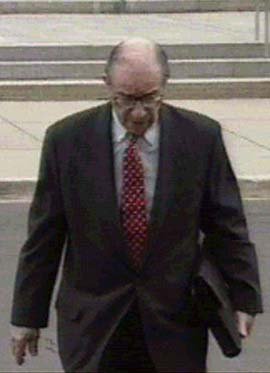Briefcase Theory
As I write this we are seeing losses in the stock market and bond yields rising as a result of a higher-than-expected inflation (CPI) report. The unexpected inflation figure means investors will look to the Federal Reserve for more aggressive rate hikes.
Today’s troubles come on the heels the stock market reeling from comments made by Jerome Powell in Jackson Hole just a few weeks ago.
In fact, in 2022 it seems investors are mostly back to looking to the Fed as the primary determinant of how to feel about markets. This is understandable, but it’s also a very difficult game to play. When we’re all looking at the same information trying to find an advantage which others don’t see, it’s hard to win consistently (Fortunately, you don’t need to operate this way. More on that later.).
As I was looking into the ramifications of Fed language and the Fed-watching we all seem to do, I was reminded of a simpler time for our financial system.
Here’s an article written on May 18th, 1999:
Alan Greenspan, Fed Chair (1987-2006)
“NEW YORK (CNNfn) - Analysts clamoring for clues on the direction of interest rates have one last resort: the briefcase theory, which holds that the size of Alan Greenspan’s briefcase offers insight into upcoming changes in lending policy.
If Federal Reserve Chairman Alan Greenspan is pushing to raise rates, he’ll walk into the Federal Open Market Committee meeting with a large briefcase, because the Fed chief will need documentation to back up his case.
If the briefcase is light, it’s a signal Greenspan wants to keep rates unchanged.
As Greenspan walked into Tuesday’s FOMC meeting, his briefcase appeared light by historical standards, supporting expectations of most analysts who see the FOMC leaving the federal funds rate at 4.75 percent.
The federal funds rate has been at that level since Nov. 17. Before that, the Fed cut rates three times, each by a quarter of a percentage point, to bolster the economy from overseas turmoil.
But last week’s Labor Department report that consumer prices rose 0.7 percent in April — the biggest rise in more than 8-1/2 years — means inflation is suddenly a concern again.
This has caused a few analysts to predict a rate tightening Tuesday. Others, however, see the Fed shifting its bias, or inclination, to raising rates at its next meeting six weeks away.
The Fed’s Open Market Committee began its meeting on time Tuesday morning. An announcement on the committee’s stance is expected later in the day.”
There was no evidence that this “Briefcase Theory” was a reliable indicator, but it gave people something to occupy themselves with, which I suppose has value.
In that spirit, here are a few more theories I think we should consider:
The Tired Eyes Theory - How tired does Jerome Powell look? More tired = more sleeplessness = worse economic data.
The JC Penney Theory - Does it look like Mr. Powell is getting his suits from JC Penney or Nordstrom? JC Penney suggests higher rates are coming, Nordstrom suggests money is cheap.
The Trick-or-Treat Theory - What kind of candy do Fed officials hand out on Halloween? Full size Snickers bars means good things for the economy, small Tootsie Rolls means investors should buckle up for a bumpy ride. If Halloween is canceled, quickly dump all of your stocks.
Okay, jokes aside, we don’t have very many good indicators for what will happen, but the good news is that we don’t really need them.
For one, people who create indicators tend to look at the past and then come up with an explanation for what happened. During this process, the lines between correlation (two things happening in conjunction) and causation (one thing happening because of another thing) get blurred. This causes a lot of grand insights about causation which may have just been happenstance.
But, more importantly, new stuff happens all of the time, which makes history an incomplete map for the future.
We still review what’s happened and why (for example, US Stock market returns have historically been higher, on average, after Fed rate hikes. Here’s an article on that), but we can’t pretend like history is a flawless sherpa for climbing this mountain. Instead, we plan on our plans not going according to plan, then let our flexibility, adaptation, and grit get us through difficult periods.
As always, if you have any questions, please let me know and we’ll tackle the unknown together.
Onward,
Adam Harding, CFP
Advisor @ Harding Wealth

